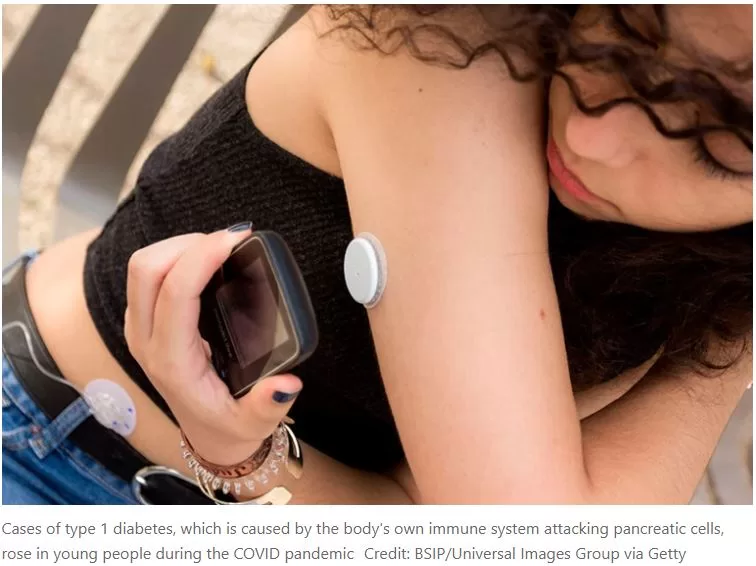
The Centers for Disease Control and Prevention (CDC) reportsTrusted Source that roughly 38.4 million people are living with diabetes in the United States, as of 2021 statistics.
Globally, that number stands at about 422 million people with many of those people living in low-and middle-income countries, according to the World Health Organization (WHO)Trusted Source.
Additionally, about 98 million adults have prediabetes, meaning you might have higher-than-normal blood sugar levels, but not high enough for an official diagnosis, according to the CDCTrusted Source.
Separate from all of this is the rare autoimmune disease, type 1.5 diabetes, which is untreatable through dietary or lifestyle changes like increased exercise.
Diabetes of any form can also lead to other serious health conditions, from heart disease to eye conditions and more.
Given the broad impact this disease has on the world’s population, it’s no surprise that innovations in how it’s treated have been in the news throughout 2023.
Dr. Robert Gabbay, PhD, MD, chief scientific and medical officer at the American Diabetes Association (ADA), told Healthline that his organization’s Standards of Care in Diabetes –2024 pinpoints many of the recent big breakthroughs, including diabetes medications being used for weight loss and obesity interventions, cardiovascular risk reduction, and the implementation of teplizumab, a drug approved in late 2022Trusted Source to delay the onset of type 1 diabetes.
Healthline spoke with a range of experts, including Gabbay, to get their thoughts on what some of the biggest breakthroughs were over the past year and what we should have on our radar for the year to come.
One of the most prominent medical news stories over the past year has centered on how drugs that were originally approved to treat diabetes have also been shown to be effective as interventions for weight loss.
Dr. Utpal Pajvani, PhD, associate professor of medicine in the Division of Endocrinology at Columbia University, pointed to the results of the SELECT trialTrusted Source.
This was the first medical trial to show that treating obesity with the GLP-1 drug semaglutide “reduced the risk of a future cardiovascular event.”
“This trial (performed in overweight patients without diabetes) will pave the way for greater acceptance of obesity as a disease that requires treatment, not just a risk factor for diabetes and other metabolic conditions,” Pajvani told Healthline.
He also gave a shoutout to tirzepatide, which was approved and marketed as Mounjaro for diabetes and most recently as Zepbound for weight loss.
“This drug, previously available for patients with diabetes under the brand name Mounajro, immediately became best-in-class for weight loss for patients with obesity. If results match that seen in trials, the average weight loss in treated patients will be over 20%,” Pajvani explained.
Dr. Sarah Kim, is a professor of medicine at UCSF, Zuckerberg San Fransisco General Hospital Division of Endocrinology and Metabolism.
She said tirzepatide has been shown “to cause tremendous weight loss in lowering glucose levels in people with diabetes in their cardiovascular outcomes trial.”
“A lot of these diabetes drugs have been now shown to reduce cardiovascular events,” she told Healthline.
Kim pointed to the U.S. Food and Drug Administration (FDA) clearingTrusted Source the Beta Bionics-developed iLet ACE Pump and iLet Dosing Decision Software, which when paired with a compatible integrated continuous glucose monitor (iCGM), collectively comprises the iLet Bionic Pancreas.
This is an automated insulin dosing system that relies on an algorithm to establish your insulin delivery. Essentially, this does away with the cumbersome — and often inaccurate — process of counting your carbs. By leaving it up to the tech, it makes the process of type 1 diabetes management more accessible and seamless for the user.
“There are all of these advanced technologies coming out about how to deliver insulin in a more physiologic way and so this latest pump actually is probably the most automated system out there,” she said.
Kim said the traditional process of counting your carbohydrate consumption can include added challenges to a person’s daily life.
This is the first insulin pump that doesn’t require information beyond a person’s weight and then “kind of figures it out by itself,” with the system’s algorithm adapting to the specific person’s required insulin levels over time. It essentially learns from what your body requires.
Kim contextualized that this is a breakthrough for people who are spending a lot of time trying to manage their insulin for type 1 diabetes and have always found that process “frustrating.”
Kim echoed Gabbay that the implementation of teplizumab (the immune therapy to prevent onset of type 1 diabetes that was approved in late 2022) has been having a positive impact.
She stressed that this is not a “full cure, it doesn’t prevent type 1 [diabetes] 100%,” but that it is an effective immune therapy given to people who are at higher risk for developing the disease down the line.
She said this is especially important for “first-degree relatives” of people with type 1 diabetes who possess the autoantibody markers of beta cell autoimmunity needed for type 1 diabetes to develop.
These are individuals who aren’t fully diabetic, yet. They may have prediabetes or be right on the verge of developing it. However, they have been shown to benefit greatly from this two-week immune therapy.
“You might actually delay diabetes for many years or maybe never get it,” Kim added. “Any delay of onset of type 1 diabetes, especially in childhood, is beneficial to delay diabetes down the line.”
Pajvani also cited the increased use of continuous glucose monitoring (CGM) in people with type 2 diabetes.
He explained that this has long been a mainstay treatment for type 1 diabetes, but data from 2021 MOBILE studyTrusted Source “showed that even patients with type 2 diabetes who use insulin show benefits from CGMs,” which are commonly referred to as “sensors.”
He added that, over the past year, many of his own patients with type 2 diabetes “have now adopted this technology.”
Kim pointed to some policy advancements over the past year as having an impact on diabetes care and management.
She said that Medicare has long set the bar for what is approved by insurance companies.
In November, the Centers for Medicare and Medicaid Services (CMS) announced it was extending Medicare Diabetes Prevention Program (MDPP) flexibilities established during the COVID-19 Public Health Emergency that will now go through December 31, 2027.
“They’ve recently expanded coverage for continuous glucose monitors in type 2 diabetes as long as you have certain criteria: number one, you’re on insulin, number two, you had trouble with severe hyperglycemia, despite attempted mitigation against it,” she said. “So that opens up CGM use for people with type 2 diabetes, especially for people on insulin.”
Kim also pointed to the Biden administration’s efforts to cap the cost of insulin at $35 per month per person — passed as part of the Inflation Reduction Act and implemented this past January.
However, it’s important to note that the provision in the administration’s legislation only applies to people on Medicare.
In 2022, Republican legislators rejected the cap for private insurers, meaning people on private insurance plans do not benefit from this specific provision, reports NBC News.
When asked what possible advancements are on his radar for 2024, Pajvani said he’s particularly looking forward to results from trials of newer drugs for both type 2 diabetes and obesity, including oral GLP-1 receptor activators that may further expand the treatment options.
Gabbay, of the ADA, echoed those thoughts.
“Next year I think we will see more about obesity. In particular, new medications, hopefully, better access, and a deeper understanding of the mechanism of weight loss and impact,” Gabbay said.
He also said technology will be front and center “with new models of care developing an expansion of digital health.”
“Nationally, I expect a big push for diabetes prevention,” Gabbay added. “This is something that ADA is leaning into heavily through a partnership with the CDC and a significant grant to focus on the Diabetes Belt,” which refers to a region of the country where people are more likely to have type 2 diabetes.
The “belt” is mostly in the southern region of the country, consisting of 644 counties across 15 states.










